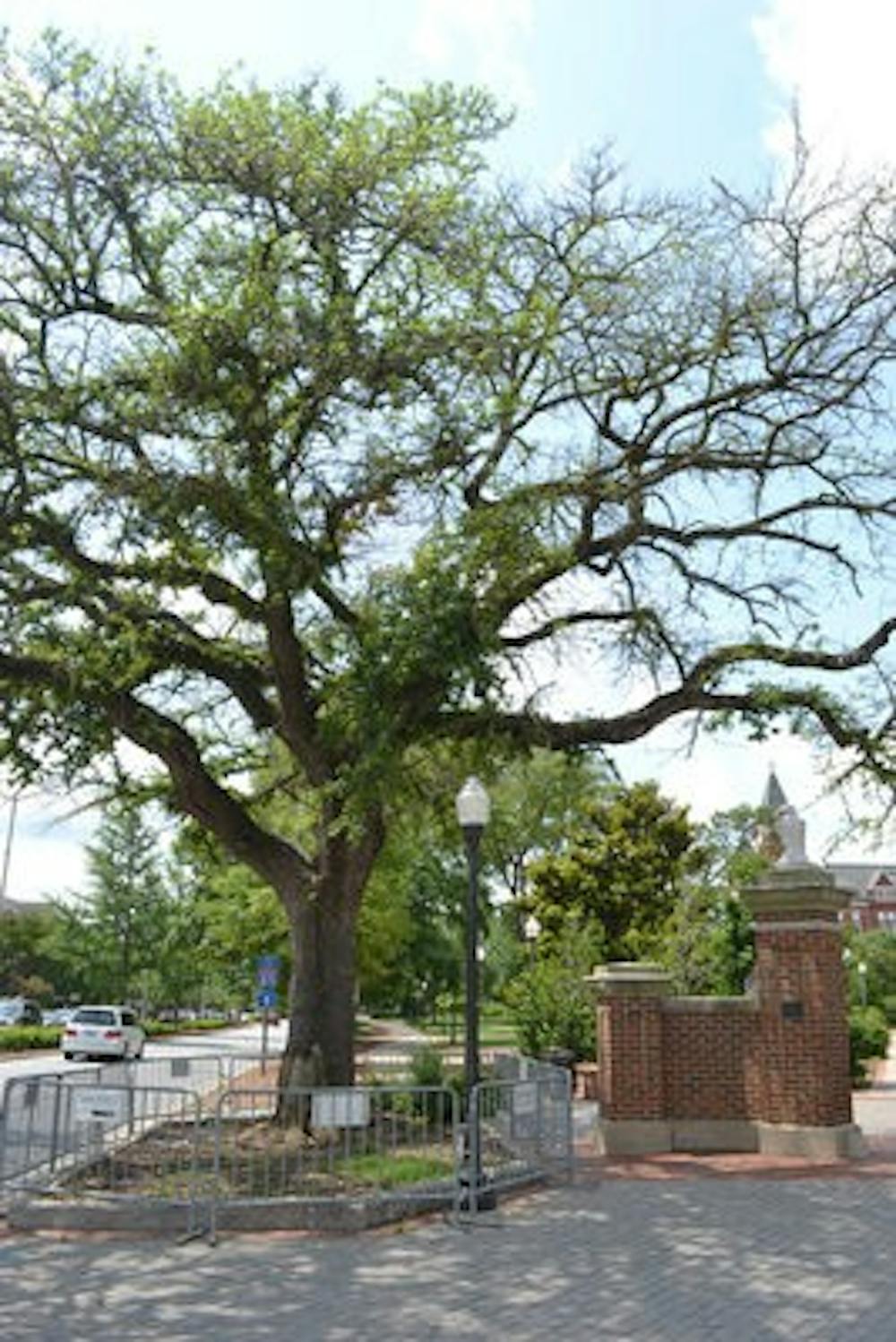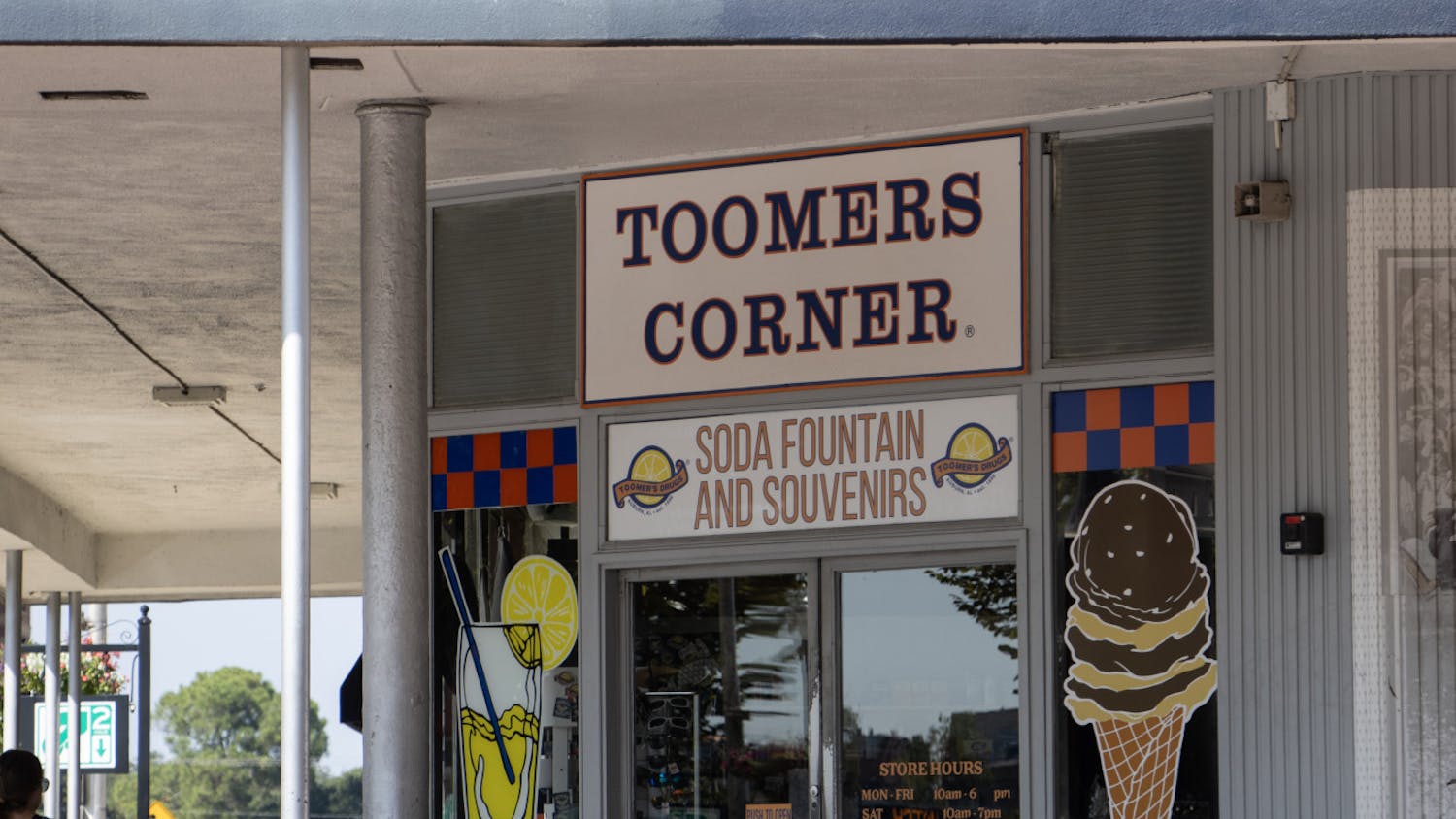Toomer's Oaks are currently the focus of a set of arboreal experiments at the University to attempt to reverse the effects of the herbicidal attack from Harvey Updyke in January 2011.
During the initial recovery process, the focus was to do no further harm to the trees.
The rapid decline in the trees' health forced the recovery team to perform an invasive procedure involving the injection of sugars that are said to aid in the process of photosynthesis.
The way the herbicide attacked the trees produced an indirect effect by hindering the absorption of sugars during the photosynthesis process.
The sugar injections are believed to hit the heart of the problem.
On April 4, the last update of Toomer's Oaks showed little sign of improvement through the first sugar injections.
Less than a week later, the trees showed signs of improved photosynthesis.
Two arborists from Tennessee lead the first injection attempt, but the trees' recovery team leader, Dr. Gary Keever, and others from Auburn plan to make another attempt within the next two weeks.
"I truthfully think that this is the only thing that will keep the trees alive for an extended period of time," Keever said.
The 49 holes that were drilled into the roots and used as ports for the injections are risky and possibly harmful because each hole becomes an entry point for potential pathogens.
Economics professor Macy Finck said the fate of the trees is unknown.
"It's a place so special that it made a deranged outsider so jealous that he attempted to destroy it," said Finck during this year's Final Lecture, a ceremony that gives students an opportunity to present the most deserving professor with an award celebrating their contributions within the classroom.
"The live oaks at Toomer's Corner may not survive, but if the attempt to kill the trees was an attempt to kill the Auburn spirit, well the perpetrator should have been more familiar with his Dr. Seuss, because you can't kill the Auburn spirit any more than you can steal Christmas," Finck said. "Trees or no trees, the Auburn family will continue to gather at the corner of College and Magnolia."
Many specialists are currently working to experiment with the recovery of the nearly century-year-old Toomer's Oaks.
The southern live oaks not only have survived the poisoning, but a non-homogeneous environment, meaning the oaks were not expected to live for so long due to the climate and temperature settings in Auburn.
The trees are preserved by cement walls surrounding the flare roots which have held in the heat necessary for their survival.
"It's just unfortunate that an entire community has to suffer the repercussions of one person's actions," said Francis Herrera, economis.
On May 10, a lift was used to remove all of the dead wood from the branches of the two oak trees.
Along with applying fertilizer and root stimulants to the soil every two weeks and ensuring adequate water supply, scientists and experts have been experimenting with injections of sugar into the flare roots of the oaks.
The interconnected system of tubing began in a large reservoir of several types of sugar. Glucose, fructose and sucrose were all included.
The recovery team plans to figure out how much glucose and carbon should be present for future injections.
"I'm trying to figure out how much glucose a healthy tree would produce and the trees weren't healthy during the first injections," said Keever.
He said that by measuring the area of the leaves, they can measure the rate of photosynthesis in order to see if the injections are helping.
"We don't have a road map," Keever said.
Do you like this story? The Plainsman doesn't accept money from tuition or student fees, and we don't charge a subscription fee. But you can donate to support The Plainsman.





